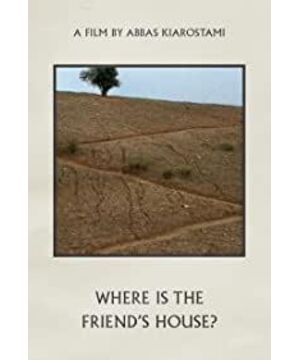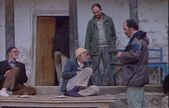Abbas became famous, the beginning of a new Iranian film. Under the background of the strict censorship system that Iran was under religious repression, discussing state affairs with Mo and banning actresses at that time, Iranian directors began to shoot children's films one after another. Handheld cameras, digital technology, live-action shooting, and the use of amateur actors, predated the later Dougma Manifesto by nearly a decade. Documentary style and long takes, while poetically expressing bitter poetry. The title comes from the poem. Abbas showed the world's audience the unique landforms and human conditions of Iran. From the child's point of view, the film shows the child's pure and persistent innocence, kind and considerate psychology, and contrasts the indifference, stubbornness and rudeness of the adult world. Together with "Life and Flow" 1992, "The Lover Under Rugby" 1994 constitutes Abbas's Village Trilogy.
The boy is never valued or understood. At home, the gridded space/wooden pillar in the foreground blocks the little protagonist, which means that he has no control over this environment. The image of the mountain road that appears repeatedly in the loess-style. The red sweater is the only warm element. The little protagonist, who has been neglected all the time, meets the lonely old man who sells wooden doors and is eager to talk, but of course the child has no intention to listen, and encountering the dog and the flower bookmark means the dependence and warmth of human nature. The old man finally went home and took off his shoes, the socks leaked out of his heels, and the wooden door was pulled down to a black screen. The old man and the man who sold the iron gate before formed a counterpoint between different eras/traditional and modern, and the final black screen means a lonely confession of an era.
View more about Where Is the Friend's House? reviews








